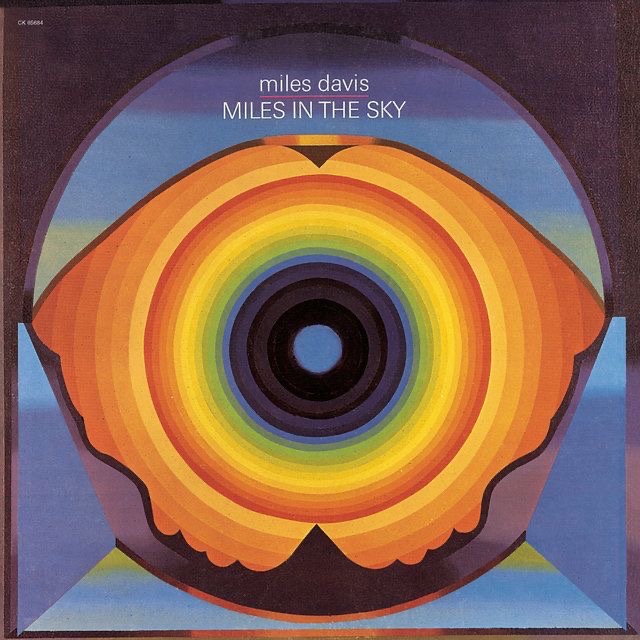Dive into the Power & Passion of ‘Tenor Madness
In the vast panorama of jazz, Sonny Rollins’ “Tenor…
I just finished listening to “Miles in the Sky,” and my ears are still buzzing with the electric energy of Miles Davis and his band’s innovation. A departure from his previous work, Davis takes us on a journey through the sky, with the sound of a man unafraid to venture into the unknown.

Recorded between January and June 1968 at Columbia Studio B in New York City, “Miles in the Sky” was released on the Columbia label. The album marks a significant shift in the direction of Davis’ music, as he began embracing electric instruments and experimenting with rock and funk rhythms.
The musicians on this album were Wayne Shorter on tenor saxophone, Herbie Hancock on piano and electric piano, Ron Carter on bass, and Tony Williams on drums. George Benson joined the crew for one track, bringing his distinctive guitar sound to the mix. Prior to these sessions, Davis and his band had been steadily pushing the boundaries of jazz, exploring modal structures and expanding the language of improvisation.
“Miles in the Sky” is an album that challenges the listener with its fusion of jazz, rock, and funk elements. Electric instruments, such as the electric piano and guitar, take center stage, creating a more aggressive, edgy sound. These sounds blend with the band’s penchant for extended improvisation, resulting in a transformative musical experience.

As we delve into each track, we find ourselves immersed in a world of groundbreaking sonic exploration. The album begins with “Stuff,” a driving, hypnotic groove that showcases the electric piano and pulsating bass lines. This track sets the tone for the rest of the album, highlighting the group’s mastery of blending genres and their willingness to push the envelope.
Next up is “Paraphernalia,” featuring the unmistakable sound of George Benson on guitar. His contribution brings a new dimension to the album, adding a touch of the blues and a sense of soulful expression. The interplay between Davis and Benson is a highlight, as they weave their musical threads together seamlessly. This track is my personal favorite, where every musician brings their A-game, creating a masterpiece that continues to captivate listeners.

The third track, “Black Comedy,” is a playful, rhythmically complex piece that showcases the remarkable talents of drummer Tony Williams. His intricate, high-energy drumming drives the music forward, while Davis, Shorter, and Hancock weave in and out with their improvisations. It’s a testament to the musical chemistry of the quintet, as they navigate the challenging rhythmic landscape with ease.
“Country Son” closes the album with its folk-inspired melody and laid-back feel. The band explores the pastoral theme, offering a more introspective approach to their improvisations. The contrast between this track and the more aggressive, electric sounds found earlier in the album highlights the diversity of Miles Davis’ musical vision.

Upon its release, “Miles in the Sky” was met with mixed reviews. Some jazz purists balked at the introduction of electric instruments and rock influences, while others recognized the innovative nature of the album. Over time, however, the album has gained recognition as a pivotal moment in Davis’ career, a stepping stone to his later explorations in jazz fusion.
Today, “Miles in the Sky” is considered a landmark album, not just for Miles Davis, but for jazz as a whole. Its fearless exploration of new sounds and styles has inspired countless musicians to push their own boundaries and redefine the limits of the genre. This album stands as a testament to Davis’ genius, as well as the incredible talents of his band members.
In conclusion, “Miles in the Sky” is an essential listen for anyone interested in the evolution of jazz and the relentless innovation of Miles Davis. The fusion of jazz, rock, and funk elements, combined with the virtuosic talents of Davis and his band members, make “Miles in the Sky” a thrilling and transformative musical experience. As we look back on this album, we can appreciate the courage and vision it took to break from tradition and chart a new course in the ever-evolving world of jazz. It is a testament to the power of artistic exploration and the limitless potential of human creativity. So, the next time you find yourself searching for inspiration, look to the sky and let the electrifying sounds of Miles Davis guide your journey.